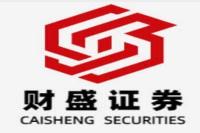Revolutionizing Retail: China's Ambitious Plan for a Modern Retail Ecosystem (Meta Description: China retail innovation, modern retail system, retail industry upgrade, retail innovation pilot cities, supply chain modernization)
Imagine a future where shopping is not just a transaction, but a seamless, personalized experience. Picture a retail landscape brimming with diverse options, cutting-edge technology, and unwavering commitment to sustainability. This isn't science fiction; it's the ambitious goal outlined in China's newly launched "Retail Industry Innovation and Upgrade Project." This isn't just another government initiative; it's a bold stroke aimed at reshaping the very fabric of China's consumer market, impacting millions and setting a global precedent for retail modernization. The plan, jointly released by seven key government departments, including the Ministry of Commerce (MOFCOM), promises a complete overhaul — from revitalizing existing infrastructure to fostering a thriving ecosystem of innovative players. This isn't just about shiny new apps or automated checkouts; it’s about creating a resilient, customer-centric, and environmentally responsible retail future. We'll delve into the specifics, exploring the project's core components, anticipated challenges, and ultimately, its potential to redefine the global retail landscape. Are you ready to witness the future of shopping, right here, right now? Get ready to be amazed! This isn't just a story about numbers and policy; it's a story about people, innovation, and the transformative power of a well-executed vision. This is the story of China's retail revolution.
Retail Industry Innovation and Upgrade Project: A Deep Dive
The recently unveiled Retail Industry Innovation and Upgrade Project is far more than a simple facelift for China’s retail sector. It's a comprehensive, multi-pronged strategy designed to catapult the country to the forefront of global retail innovation by 2029. The plan aims to create a modern retail system characterized by abundant supply, balanced distribution, diverse channels, high-quality service, smart convenience, and environmental sustainability. Think of it as a complete ecosystem upgrade, not just a few software updates. This involves a massive undertaking, requiring coordinated efforts across various government agencies and private sector stakeholders.
The project's core objectives are to:
-
Revitalize existing retail infrastructure: Many existing retail spaces are outdated and inefficient. The plan addresses this by allocating resources to modernize and repurpose these assets, transforming them into vibrant, modern retail hubs. This isn't just about slapping on a fresh coat of paint—it's about strategic redevelopment, often incorporating technology and sustainable practices.
-
Develop a network of pilot cities: China will annually select several “pilot cities” to spearhead the implementation of these innovative strategies. These cities will serve as living laboratories, testing and refining new approaches before wider rollout. This allows for targeted interventions and reduces the risk of large-scale failures. Think of it as a "beta test" for the entire nation.
-
Promote best practices and successful case studies: The project emphasizes the dissemination of successful strategies and innovations, ensuring that lessons learned in pilot cities are quickly replicated across the country. This approach fosters a culture of continuous improvement and accelerates the overall pace of transformation. It’s about sharing the wins, not just the losses.
Key Pillars of the Modern Retail System
The ultimate goal is to build a robust and resilient modern retail system, boasting the following characteristics:
-
Abundant Supply: Ensuring a wide array of goods and services are readily available to consumers, addressing diverse needs and preferences. This means focusing on efficient supply chains and streamlined logistics.
-
Balanced Distribution: Strategic allocation of retail resources across different regions, preventing oversaturation in some areas and shortages in others. This includes considerations of population density, economic activity, and infrastructure.
-
Diverse Channels: A mix of online and offline channels, offering consumers flexible and convenient shopping experiences. This acknowledges the importance of both physical stores and e-commerce platforms.
-
High-Quality Service: Improved customer service, personalized experiences, and efficient complaint resolution mechanisms. This focuses on enhancing the overall shopping journey, making it enjoyable and stress-free.
-
Smart Convenience: Leveraging technology to enhance efficiency and customer convenience, including mobile payments, online ordering, and automated systems. This is where AI and other technological advancements come into play.
-
Green and Low-Carbon Operations: Promoting environmentally sustainable practices throughout the retail supply chain, from product sourcing to waste management. This reflects a growing global emphasis on sustainability and corporate social responsibility.
Challenges and Opportunities
While ambitious, the project faces several challenges:
-
Implementation complexity: Coordinating efforts across numerous government agencies and private sector stakeholders will require significant coordination and effective communication.
-
Technological integration: Successful implementation depends heavily on the seamless integration of technology across the entire retail ecosystem. This requires significant investment in infrastructure and training.
-
Maintaining affordability: Balancing innovation with affordability is crucial to ensure the benefits reach all segments of society. This requires careful consideration of pricing strategies and consumer affordability.
-
Competition from international players: China's retail sector faces intense competition from global giants. The project must ensure domestic players can compete effectively in this increasingly globalized market.
However, these challenges also present significant opportunities:
-
Job creation: The project is expected to create numerous jobs, particularly in areas such as technology, logistics, and customer service.
-
Economic growth: The modernization of the retail sector will stimulate economic growth, boosting consumer spending and investment.
-
Technological advancement: The project will accelerate the adoption of advanced technologies, positioning China as a leader in retail innovation.
-
Enhanced consumer experience: Consumers will benefit from a more convenient, efficient, and personalized shopping experience.
The Role of Pilot Cities
The selection of pilot cities will be crucial to the project's success. These cities will serve as testing grounds for innovative strategies, allowing for experimentation and refinement before nationwide implementation. Factors to be considered during city selection will likely include:
-
Existing retail infrastructure: Cities with a solid foundation of existing retail infrastructure will be better positioned to benefit from the project.
-
Technological readiness: Cities with robust digital infrastructure and a skilled workforce will be more conducive to technological integration.
-
Government support: Strong government support and commitment are essential for successful implementation.
-
Economic dynamism: Cities with vibrant economies and a strong entrepreneurial spirit will be ideally suited for testing innovative approaches.
Frequently Asked Questions (FAQs)
Q1: What is the timeline for the Retail Industry Innovation and Upgrade Project?
A1: The project aims to achieve its core objectives by 2029, with pilot cities being selected and upgraded annually.
Q2: How will the project impact consumers?
A2: Consumers will benefit from a more convenient, efficient, and personalized shopping experience, with a wider selection of goods and services.
Q3: What role will technology play in the project?
A3: Technology will be central to the project, driving improvements in efficiency, customer service, and supply chain management.
Q4: How will the project promote sustainability?
A4: The project emphasizes green and low-carbon operations throughout the retail supply chain, reducing environmental impact.
Q5: Will the project benefit all segments of society?
A5: The project aims to benefit all segments of society, but careful consideration will be given to ensuring affordability and access.
Q6: What are the key performance indicators (KPIs) for measuring the project's success?
A6: KPIs will likely include metrics such as consumer satisfaction, retail sales growth, job creation, and environmental sustainability.
Conclusion
China's Retail Industry Innovation and Upgrade Project represents a bold and ambitious vision for the future of retail. While challenges undoubtedly exist, the potential benefits are immense. By fostering innovation, promoting sustainability, and enhancing the consumer experience, this project has the power to reshape not only China's retail landscape but also to serve as a global model for modernizing the retail sector. The coming years will be critical in witnessing the unfolding of this ambitious plan and its impact on the global retail stage. Stay tuned! This is just the beginning of a new era in retail.



